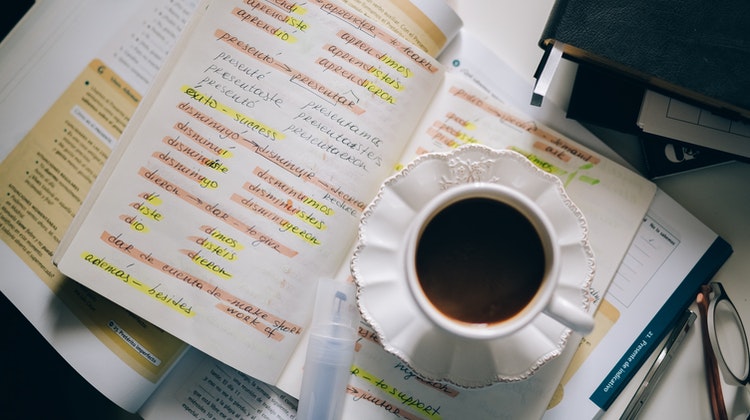When one begins to learn Spanish, it is difficult to remember all these endings (suffix - desinence in Spanish), but as in the construction of a house, this learning needs a good foundation that will give it the necessary strength.
Of course, the key to mastering the conjugation of Spanish verbs is in practice, but also in knowing well the shortcuts that will help us remember quickly and effectively.
At an initial level, A1-A2, we still maintain the enthusiasm and desire necessary to make an extra effort and retain those first conjugations. There are not many at the beginning, so we still feel confident, as we can control them. The problem comes when we level up and the dreaded "subjunctive" appears. But there is nothing to fear.
In this article we are going to review the keys to remember more effectively the forms of the subjunctive in the present, so that we can direct our energy in detecting when we have to use the subjunctive and not in having to think how the hell these tenses conjugate.
FINDING OUT THE ROOT OF SPANISH VERB CONJUGATION
The root of the present subjunctive comes from the first person singular (YO) of the present indicative and maintains each and every one of the irregularities of the indicative. Therefore, if I know the present indicative well, the subjunctive is a piece of cake.

Now is the time to remember the irregularities of the present. We can group them as follows:
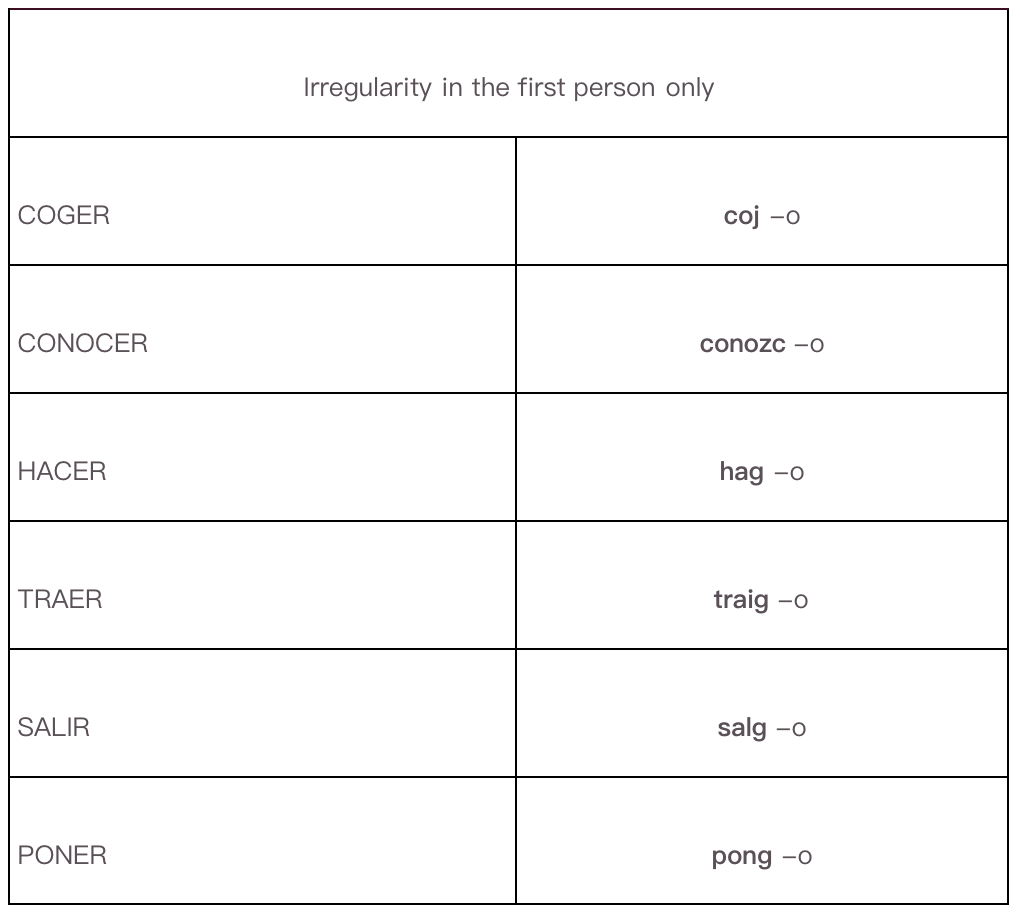
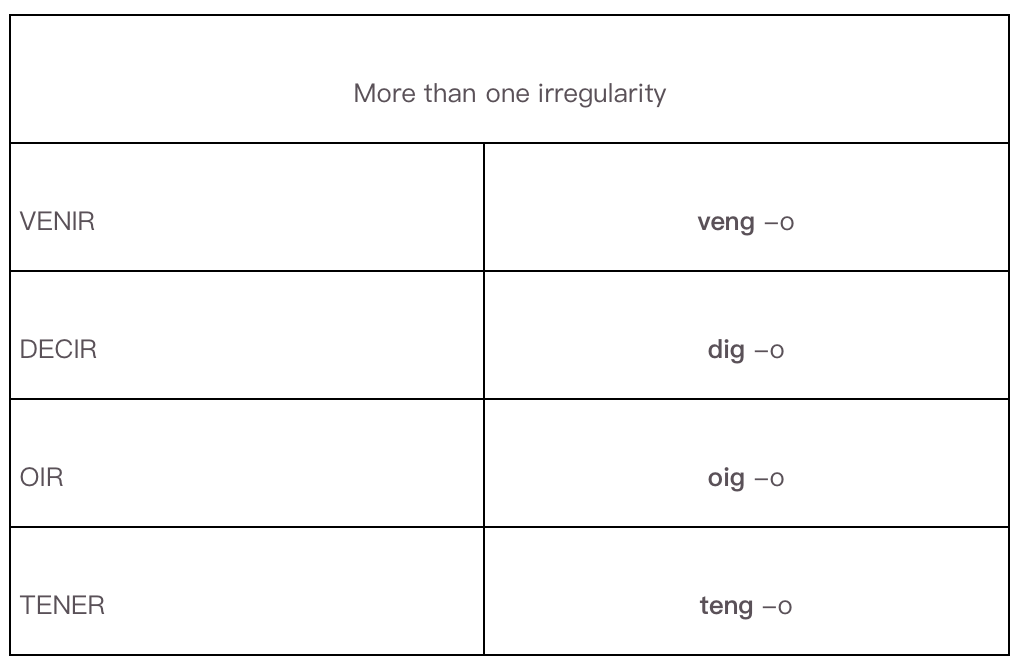
SPANISH PRESENT TENSE VERB CONJUGATION CHART: SUBJUNCTIVE
Once the root is known, we only have to add the endings. Curiously, in the present subjunctive the verbs in -AR, first conjugation, have the endings in E, and the verbs ending in -ER, -IR, second and third conjugations, have the endings in A. In this way, we would conjugate the present subjunctive as follows:
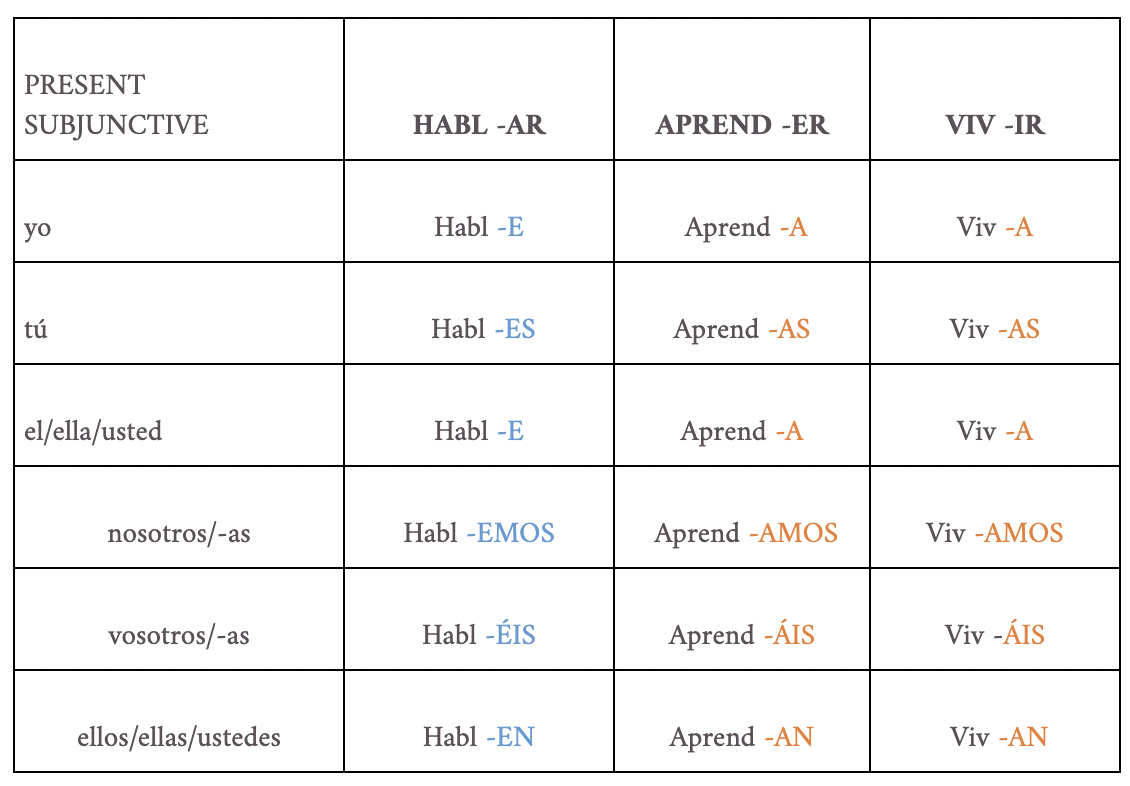
If you want to learn Spanish fluently in a year, it’s necessary to remember all these verb endings. The more you practice, the easier it will be.
IRREGULAR VERB CONJUGATION IN SPANISH
Finally, how could it be otherwise, we have some rebellious verbs that do not follow any of these patterns and that are totally irregular:
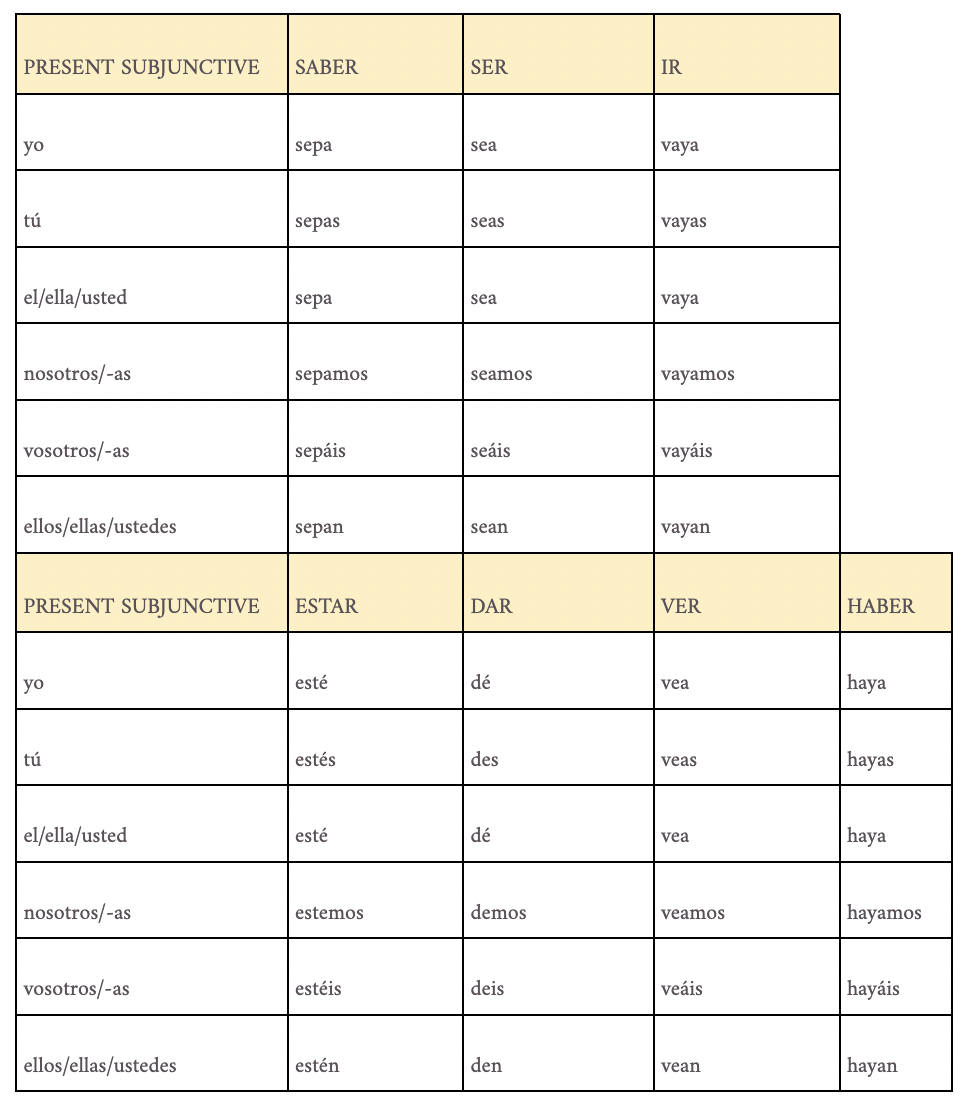
As they are not so easy to remember, I suggest that you put them into practice with simple and recurring phrases that help you remember them, for example:
Que yo sepa: as far as I know
Sea lo que sea: whatever it might be
Que te vaya bien: good luck! / Take care
In this way, you can also teach yourself Spanish. In fact, learning Spanish with a grammar book is a good method. It helps you learn Spanish step by step. When you have difficulty analyzing the language, you can quickly find the key point in the book and revise it.
As you can see, the pillars of learning Spanish are crucial, so pay close attention and do not mind repeating whatever you are learning a thousand times, as it will be of great help at higher levels. A good foundation is essential for smooth development. Don't give up and give Spanish verb conjugation a chance! From here, we will try to make your way easier. And if you want to hire an online Spanish tutor, you can contact me and have trial lessons with me. I will help you do more Spanish verb conjugation and other grammar practice.
